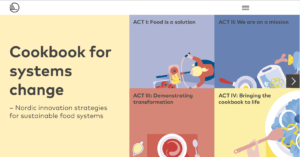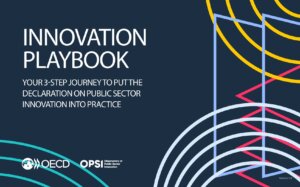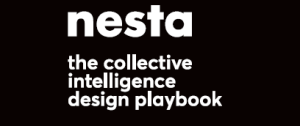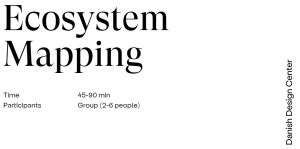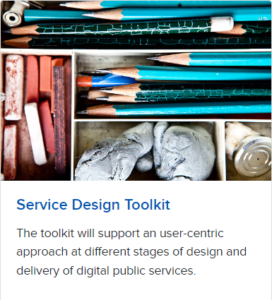Design is a systematic, creative process as well as a result. The process of designing is visual and experimental, with people’s experiences and behaviours as focal points. The results can be graphical or physical products, new services, systems or business models. Thus, it is helpful to differ between a design and to design.
By Sara Gry Striegler & Christina Melander, Danish Design Centre
Design – like engineering – contains many different disciplines, e.g. industrial design, graphic design, digital design, product design, service design, experience design, strategic design, organisational design and design management. Thus, design – a design – varies from apps guiding patients before surgery to beds that help disabled to lay down without human assistance to design of engaging urban spaces and new divorce-related mediation services – and everything in between.
Basic principles
The design process is about moving from insights in a concrete situation in the present to analysis and idea generation towards a new and equally concrete situation in the future, often using visual communication and interpretation. It works as a boundary-spanning process across different agendas and discourses, as it enables better dialogue and understanding. Therefore, it gives the participants in a design process a common frame of reference.
One way of looking at the role of design methods is on the following three dimensions (Bason, 2014):
- Exploring the problem: Challenge your assumptions and bring empathy into play.
- Co-creating new solutions: Find ways to create space for deviations and learn how to navigate in the unknown.
- Making the future concrete: Make it visual and tangible so you can rehearse the future and seek to aim for double value. Be ambitious.
State of the practice
In the past, design was primarily understood as an industry as part of the creative sector and related to furniture and lifestyle products. Today, design is valued and acknowledged as an enabler across industries and as a problem-solving approach in the private sector and in governments to develop meaning for citizens and value for society in general. Thus, it contains methodologies valuable for public sector innovation.
Design can be applied in the public sector at a number of different levels (Design for Policy, Design Council). Below are three steps – levels – inspired by the Design Ladder developed and initiated by the Danish Design Centre in 2001. From operational to strategic.
Step 1: Design for discrete problems. At this step or level, design projects are one-offs and design is not embedded in the commissioning organisations. Public sector service design projects, of which there are numerous good examples, fit into this category. Projects can be very small or have wide systemic implications. They can tackle societal problems such as malnutrition among the elderly, violence in hospitals and worklessness, among many others. This category also covers design’s application as a way of making technology useful and valuable for people.
Step 2: Design as capability. Here, public sector employees not only collaborate with designers as suppliers, they understand and use design and design thinking themselves. Many design techniques and methodologies are easily transferable to non-designers and can create significant efficiencies as part of day-to-day operations. At this level, staff use design skills to solve problems considered too small for hiring designers. At the same time staff gain a shift in perspective by seeing things from the point of view of the citizens they serve. Most likely, this also helps public sector employees become more adept at hiring design teams when required.
Step 3: Design for policy. Here, design and design thinking is used by policymakers, often facilitated by designers. This is a relatively new discipline and much of the work done so far has been experimental, but the logic of the application of design here is strong given that it meets some key needs for policy makers:
- A joined process, from policymaking to implementation
- A low-cost way of mitigating risk through prototyping
- A way of getting an overview of a system
- A way of cutting across departmental silos and engaging people from outside government too.
In the private sector, design creates value and return of investment. Several studies (McKinsey, Danish Design Centre, Design Council etc.) show that companies that use design and creativity perform better financially and are stronger in relation to competition compared to other companies. In the public sector, “return on investment,” in addition to some cost savings, can mean better alignment of the work of governments with the needs and expectations of citizens.
In general, the potential value of using design and design methods are among others;
- creating superior products, services, systems, and strategies
- improvement or rethinking of business and governance models
- more satisfied and loyal customers, users and citizens
- faster, more efficient and accurate innovation processes
- increased ownership of change in the organization
- increased employee satisfaction
Considerations for use in the public sector
Design in government and the public sector consistently deliver lower costs, greater efficiency, more fulfilled public sector staff and, most importantly, more and new value for citizens. Design has shown its ability to connect the dots between two first-order objectives often seen as mutually exclusive: cutting state spending and improving the experience of citizens. It does this by creating a multifaceted understanding of the problem area and, therefore, gives the opportunity to tailor solutions to the needs of the end user, the citizen, and trimming off whatever is extraneous or left over from previous work. In the current straitened economic climate, this is vital. However, design-led innovation techniques are not mere emergency measures. Rather, they are ways of working that governments can and should use at any time. Whether one has substantial or few resources, what matters is that they are targeted effectively. Design and design thinking fit solutions to problems with precision. It is a way of being agile, economical and intelligent in meeting both the challenges that are pressing in the present and the new ones that will continually appear in the future. Design has the potential to help societies not only sustain themselves, but flourish.
Applying design in the public sector help create changes such as:
- From disjointed incrementalism to designing for the fundamental need. Often the governments spend too much time firefighting, patching together seemingly expedient solutions that reengineer what already exists without stopping to ask if the fundamentals are right. Designers reframe the question in terms of the real world conditions that services and policy seek to affect. They look at the needs of the people in question and tailor solutions accordingly.
- From high-risk piloting to low-risk prototyping. New government measures are often piloted at too large a scale, incurring considerable risks and costs. Design process tests solutions with low-cost, small-scale prototypes initially. It frames failure at this stage as “smart failure” which allows solutions to be improved and risk to be designed out as prototypes progress.
- From poor understanding of citizen needs to direct understanding of citizen needs. Focus groups and surveys are ineffective because of the, often, huge gap between what people do/want and what they say they do/want. Designers observe user behaviour in the real world to identify needs that people are often not aware of themselves.
- From silo structures to multidisciplinary teamwork. Government departments often find it difficult to work together and to engage relevant specialists and users outside government. While acknowledging that there can be profound structural barriers here, design offers highly effective ways of assessing departments, disciplines and individuals that are relevant and the field of design offers a wide range of proven techniques for helping multidisciplinary teams collaborate (Design for Policy, Design Council).
Typical methods and tools
Some of the most commonly used methods and tools include:
- Value system mapping
- Brainstorming matrix
- How might we
- Recognition patterns
- Problem framing
- User journeys
- Scenario design
- Prototyping
What to consider when choosing a design toolkit
When choosing a design toolkit to use in government or public sector, consider current design experience, design capacity, design maturity and ambitions. Some design toolkits are best for design practitioners where others are very well suited for policy makers and civil servants that want to apply design methods in public sector institutions.
It is highly recommendable to explore case stories that describe similar problems being solved by peers in similar organisations. Case stories are probably one of the best ways to explain how design works in practise. This is an effective approach to inspire team and staff and provide a reason – or show them the way – to try to solve problems in new ways.
As described in this article, design creates value and has proven to be a successful approach to problem solving, to meet the needs of citizens and users and at the same time create effective and sustainable services and public sector organisations. However, a design-led approach requires that you spend more time in the initial stages of the development process, it requires user involvement and co-creation. This will lead to positive outcomes – but it can feel both frustrating and like running around in circles during the iterative process. It is a tough job to challenge assumptions and bring empathy into play.
Browse through some of the tools:
- Google Design sprint
- The Design Thinking Canvas
- Danish Design Centre’s Toolbox
- The Design Thinking Handbook
- Design Method Toolkit
- DIN model
And view all toolkits for design here.
Consider closely related disciplines as well:
Would you like some help?
How well-versed are you with applying design tools and methods? Do you have experience with applying these approaches in practise? If not, then the language and complexity of the working methods can be daunting. Find help and connect to a design expert who has practical experience in addressing public sector challenges. But be aware so that you do not get sucked into applying their favourite method.
Learn about building skills and capacity for design
Find OPSI network members who are working with design
Reach out to OPSI for guidance with design
Request a webinar on this topic – top-requested topics will be prioritised



